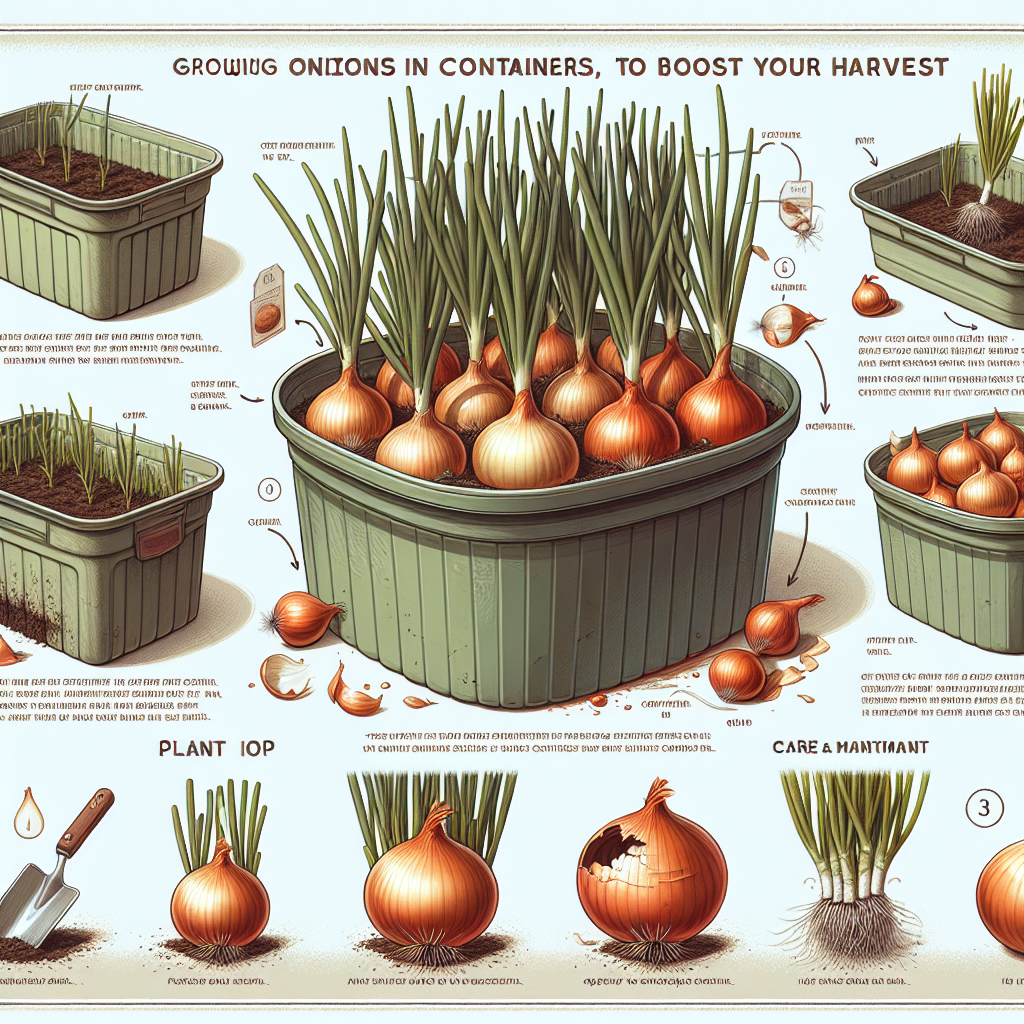Onions are a staple ingredient in many dishes, adding flavor and depth to a wide variety of recipes. While onions are typically grown in the ground, they can also be successfully grown in containers, making them an ideal option for those with limited space or poor soil conditions. By following a few simple steps, anyone can grow onions in containers and boost their harvest.
In this easy guide to growing onions in containers, you will learn everything you need to know to successfully grow your own delicious onions. From selecting the right container and soil to planting, watering, and harvesting your onions, this guide will walk you through each step of the process. With just a little bit of effort, you can enjoy a bountiful harvest of fresh, flavorful onions right from your own container garden.
**Choosing the Right Container**
The first step in growing onions in containers is selecting the right container for your plants. Onions have shallow roots, so a container that is at least 6 inches deep should provide enough space for them to grow. You can use any type of container for growing onions, including plastic pots, wooden crates, or even old buckets. Just make sure that whatever container you choose has drainage holes at the bottom to prevent water from accumulating and causing root rot.
**Selecting the Right Soil**
Once you have chosen your container, it’s time to select the right soil for your onion plants. Onions prefer well-draining soil that is rich in organic matter. You can use a pre-mixed potting mix specifically designed for vegetables or make your own by combining equal parts potting soil, compost, and perlite or vermiculite for added drainage.
**Planting Your Onions**
Before planting your onion sets or transplants in the container, it’s important to prepare the soil by loosening it with a trowel or hand fork. Make sure to space your onion sets or transplants about 4-6 inches apart to allow room for them to grow. Press them gently into the soil so that just the tip is showing above the surface.
**Watering and Maintenance**
Onions require regular watering to thrive, especially during hot weather when containers tend to dry out quickly. Water your onion plants deeply once or twice a week, making sure that the water reaches all the way down to the roots. Avoid overwatering as this can lead to root rot. It’s also important to fertilize your onion plants every 2-3 weeks with a balanced fertilizer to ensure they have all the nutrients they need to grow healthy and strong.
**Harvesting Your Onions**
When it comes time to harvest your onions will depend on whether you planted sets (small bulbs) or transplants (small plants). Sets are typically ready for harvest when their tops turn yellow and start drooping over while transplants are ready when their tops fall over naturally. To harvest your onions simply pull them up by hand and allow them to dry out completely before storing them in a cool, dry place.
By following these simple steps for growing onions in containers., you can enjoy a bountiful harvest of fresh onions right from your own home garden without any hassle. Whether you’re an experienced gardener looking to save space or a beginner looking for an easy way into vegetable gardening., growing onions in containers is an excellent option that anyone can try with great success.
FAQ:
Q: Can I grow onions indoors?
A: Yes! Onions can be grown indoors as long as they receive enough sunlight and are watered regularly.
Q: How long does it take for onions to mature?
A: Onions typically take 3-5 months from planting until they are ready for harvest.
Q: Can I regrow green onions from scraps?
A: Yes! Green onions can be regrown from scraps by placing them in water until they develop roots and then transplanting them into soil.
Q: Do I need special fertilizer for growing onions?
A: While not necessary., using a balanced fertilizer every 2-3 weeks will help ensure that your onion plants have all the nutrients they need.
Remember there is nothing as sweet as harvesting what you’ve grown yourself! Enjoy exploring new things with our guide!













